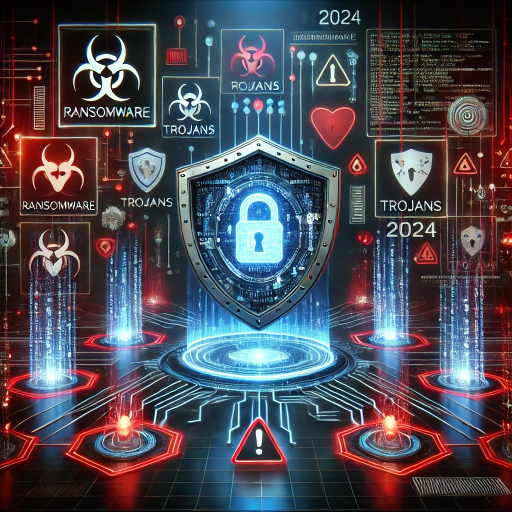The Top Malware Threats of 2024: A Year in Review
Introduction
As businesses and individuals continue to rely heavily on digital systems, cybercriminals have adapted with increasingly sophisticated malware threats. The year 2024 saw a mix of new and persistent threats targeting users worldwide, with cybercriminals leveraging phishing, fake updates, and advanced obfuscation techniques to deploy malware. Ransomware-as-a-Service (RaaS), AI-powered attacks, and highly evasive malware strains have pushed cybersecurity defenses to the limit. In this article, we highlight the most significant malware threats of the year and provide insights into their impact, methods, and prevention strategies.
1. SocGholish Downloader
- Impact: Leads to unauthorized access and potential data breaches.
- How It Works: Users download a malicious file believing it to be a legitimate update.
- Prevention: Keep software updated from official sources and educate users on avoiding fake update prompts.
2. CoinMiner Cryptocurrency Miner
- Impact: Degrades system performance, increases power consumption, and can cause hardware damage.
- How It Works: Once installed, CoinMiner runs in the background, using the CPU and GPU to mine cryptocurrency.
- Prevention: Use endpoint protection and monitor network traffic for unusual activity.
3. RansomHub Ransomware
- Impact: Encrypts critical data and demands ransom payments, causing operational disruptions.
- How It Works: Typically deployed via phishing emails or exploiting vulnerabilities in remote desktop services.
- Prevention: Regularly back up critical data, apply security patches, and implement robust endpoint protection.
4. Arechclient2 Remote Access Trojan (RAT)
- Impact: Unauthorized access, data exfiltration, and compromised network security.
- How It Works: Typically delivered via phishing emails, it establishes a connection to an attacker's server.
- Prevention: Enhance email security and train users to identify phishing attempts.
5. Ratenjay Remote Access Trojan (RAT)
- Impact: Theft of credentials, sensitive data exfiltration, and potential for further malware deployment.
- How It Works: Spread through malicious email attachments or links, it establishes persistent access for attackers.
- Prevention: Maintain updated antivirus software and limit administrative privileges.
6. DarkGate Downloader
- Impact: Opens the door for severe malware infections, leading to financial and reputational harm.
- How It Works: Uses obfuscation techniques to evade detection before downloading additional malware.
- Prevention: Implement advanced threat detection and conduct regular security scans.
7. Jupyter Infostealer
- Impact: Compromises personal and business security, leading to financial losses and identity theft.
- How It Works: Delivered through malicious attachments or links, it extracts data from browsers and applications.
- Prevention: Regularly patch software and educate users on the dangers of opening unsolicited attachments.
8. BlackCat/ALPHV Ransomware
- Impact: Causes operational downtime, data breaches, and extortion through double extortion tactics.
- How It Works: Spreads via compromised credentials, phishing attacks, or software vulnerabilities.
- Prevention: Enforce strong password policies, enable multi-factor authentication (MFA), and monitor for unauthorized access attempts.
9. AI-Powered Malware Attacks
- Impact: Increased attack sophistication, making traditional defenses less effective.
- How It Works: AI-powered malware dynamically adjusts attack techniques based on the target's defenses.
- Prevention: Invest in AI-driven security solutions and continuously update threat detection models.
Conclusion
Cyber threats continue to evolve, and staying informed is essential for protection. By implementing proactive cybersecurity measures, businesses and individuals can mitigate the risks associated with these prominent malware threats of 2024. Organizations must stay vigilant, invest in modern security technologies, and educate users on best practices to prevent falling victim to cyber threats.
Sources
- Center for Internet Security (CIS) Top 10 Malware Q4 2024
- Mandiant Threat Intelligence Report 2024
- CISA Alerts and Advisories
- Sophos 2024 Threat Report
- CrowdStrike Global Threat Landscape Report
This is part of an ongoing series reviewing the year’s top cybersecurity threats. Check back next year for the 2025 edition.
#CyberSecurity #Malware #Ransomware #CyberThreats #InfoSec #DataSecurity #AIThreats #Phishing #Hacking #EndpointSecurity #CyberAttack #CyberDefense #ITSecurity #NetworkSecurity #MaaS #SupplyChainSecurity #Blog







